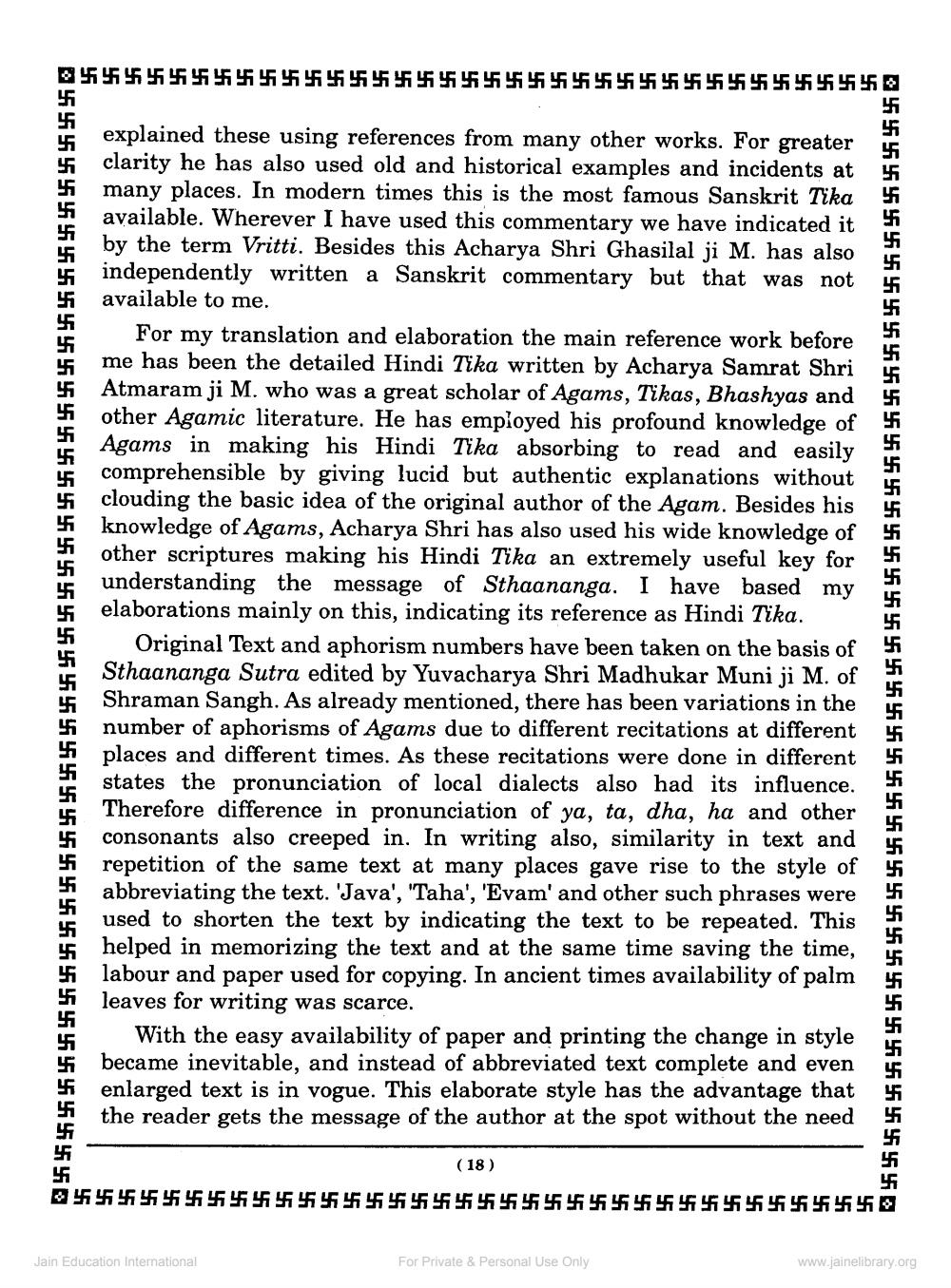________________
5555555555555555555555555
5555555555555
卐
explained these using references from many other works. For greater clarity he has also used old and historical examples and incidents at many places. In modern times this is the most famous Sanskrit Tika available. Wherever I have used this commentary we have indicated it by the term Vritti. Besides this Acharya Shri Ghasilal ji M. has also independently written a Sanskrit commentary but that was not available to me.
For my translation and elaboration the main reference work before
me has been the detailed Hindi Tika written by Acharya Samrat Shri Atmaram ji M. who was a great scholar of Agams, Tikas, Bhashyas and other Agamic literature. He has employed his profound knowledge of Agams in making his Hindi Tika absorbing to read and easily comprehensible by giving lucid but authentic explanations without clouding the basic idea of the original author of the Agam. Besides his knowledge of Agams, Acharya Shri has also used his wide knowledge of other scriptures making his Hindi Tika an extremely useful key for understanding the message of Sthaananga. I have based my elaborations mainly on this, indicating its reference as Hindi Tika.
卐
consonants also creeped in. In writing also, similarity in text and
Original Text and aphorism numbers have been taken on the basis of Sthaananga Sutra edited by Yuvacharya Shri Madhukar Muni ji M. of Shraman Sangh. As already mentioned, there has been variations in the number of aphorisms of Agams due to different recitations at different places and different times. As these recitations were done in different 卐 states the pronunciation of local dialects also had its influence.
卐
卐
卐
Therefore difference in pronunciation of ya, ta, dha, ha and other
卐
repetition of the same text at many places gave rise to the style of abbreviating the text. 'Java', 'Taha', 'Evam' and other such phrases were used to shorten the text by indicating the text to be repeated. This helped in memorizing the text and at the same time saving the time, labour and paper used for copying. In ancient times availability of palm leaves for writing was scarce.
555555555555555555555555555555555
(18)
55555555555555555555
Jain Education International
卐
卐
With the easy availability of paper and printing the change in style became inevitable, and instead of abbreviated text complete and even enlarged text is in vogue. This elaborate style has the advantage that 卐 the reader gets the message of the author at the spot without the need 卐
For Private & Personal Use Only
卐
卐
卐
卐
www.jainelibrary.org




